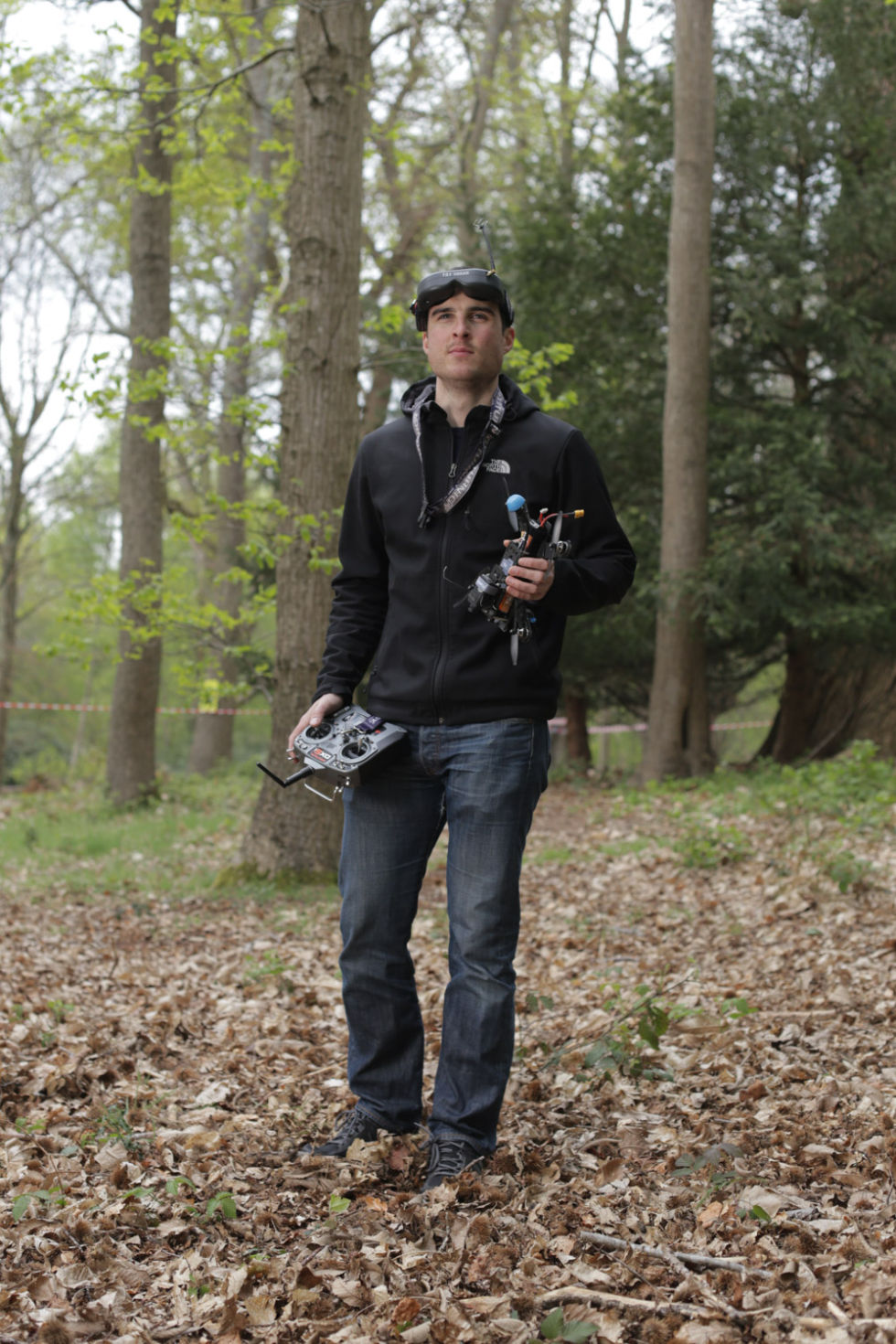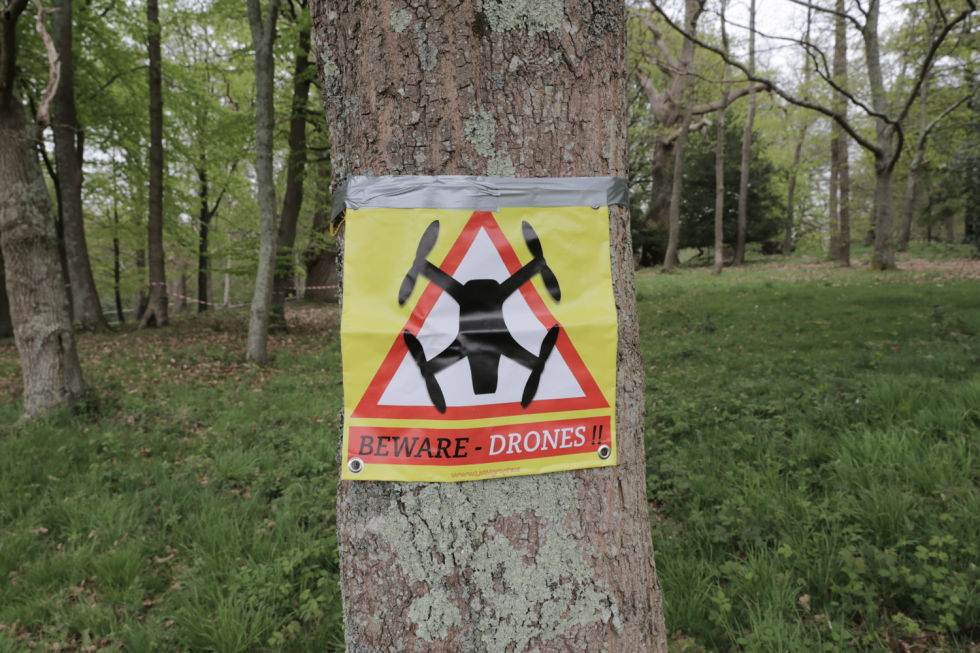
If you hadn’t noticed, drones and quadcopters are rather popular right now. Hardly a day goes by without some kind of automated or remotely piloted aircraft somehow causing a ruckus, or providing a new way for militaries and cinematographers alike to get the shot they need. What you might not have noticed, however, is that there is an underground movement to turn drone flying into a sport.
Known as FPV (first-person view) drone racing, or sometimes FPV quadcopter racing, the sport involves building and modifying quadcopters for speed and manoeuvrability, adding a virtual reality-style headset with a live video feed from the drone, and then finding safe and legal places to fly. Racers compete in heats or time trials, speeding around courses at anything up to 60mph (100km/h)—and having a load of fun in the process. This sport, which seems to appeal to aspiring pilots, makers, and computer game fans alike, has all the adrenaline of flight, while also providing enough crashes, smashes, and collisions to keep even the most ardent sports fans happy.
For the past three months, I’ve been photographing the fledgling sport at various locations throughout the UK. I’ve found that there is much more to it than a bunch of geeks comparing voltage signals or PID settings in the woods on a Sunday.
David Stock
28-year-old Jonathan Banton, a product designer, holds his QAV 250 racing drone. ”I just look forward to the next opportunity to race. I love it.”
-
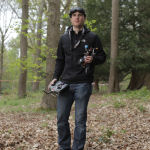
David Stock
28-year-old Jonathan Banton, a product designer, holds his QAV 250 racing drone. ”I just look forward to the next opportunity to race. I love it.”
-
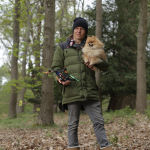
David Stock
Geordie Milne, from Vancouver, BC, Canada, with Bhodi the dog and Emax 300. “I fly every day.”
-
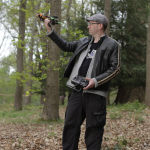
David Stock
Dom Robinson, media workflow engineer, Brighton, UK. “I love FPV because it provides a completely immersive space where I cannot think about anything else for a few intense moments.”
-
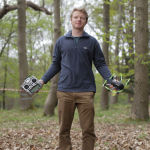
David Stock
27-year-old Matt Denham from Haywards Heath, UK with his TBS Gemini. “Late last year I saw a video of some quad racing, little did I know it would take me up to today where I’m totally hooked.”
-
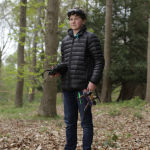
David Stock
16-year-old Gabriel Robson, student, with his ZMR 250. “The reason I love FPV is that it is so much fun.”
-

David Stock
30-year-old Simon Martinez from Alton, Hampshire, UK, with his heavily modified ZMR 250. “I am just trying to keep improving and seem to be breaking a lot of stuff along the way!”
-
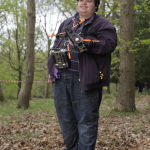
David Stock
20-year-old Francis Harris from Brighton, UK with his Blackout 330.
-
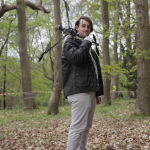
David Stock
24-year-old Nikosu Arasaki from Brighton, UK with a scratch-build tricopter.
-

David Stock
Jack Nash with tricopter. “We’re not hurting anyone, not killing the planet, and we are making a few friend and some good memories along the way.”
“When I put those goggles on… I cannot think about anything else for a few intense moments.”
While FPV drone racing attracts a mixed bag of racers of all ages, they all have one common interest. “We just love flying,” said Jonny Banton, a pilot who often acted as my guide and translator in a world filled with techy terminology. “Its like a video game with DIY skate sensibilities,” Dom Robinson, a racer from Brighton, told me.
I wanted to capture not only the excitement of racing and the technical side, but also the personalities of the people and their experience of flying. Pilots often alluded to a sense of escapism. “When I put those goggles on I’m in a completely immersive space where I cannot think about anything else for a few intense moments,” said Robinson. It puts you in “an entirely new dimension with your surroundings,” Matt Denham, a racer from Haywards Heath, said. “It’s about as close to being a bird as you can get.”
There’s also a strong aspect of camaraderie, social interaction, sense of community—and a good sprinkling of quirkiness. There’s nothing quite like watching a grown man yelp, willing his drone to fit through an impossible gap, while at the same time twisting his head around manically as if that could squeeze the last inch of performance out of the thing—only to have the crowd, all watching on monitors, double over as the pilot misjudges the space, clips a rock, spins into a tree, and wedges his drone somewhere deep on the course. Now that’s something you don’t get in many other sports.
Hidden Valley
I first heard about FPV racing via Airgonay, a French group of FPV pilots who made the, perhaps obvious, comparison between their sport and the pod racing seen in Star Wars Episode I: The Phantom Menace. I remember thinking at the time, as I watched the video, that this was going to be huge.
Fast forward a year and I’m taking in events at the world-famous polo course at Cowdray Park Estate—turns out that Lord Cowdray’s son, Monty, is a pretty good FPV pilot—Wealden House in East Grinstead, and an impressive course on a farm outside Brighton nicknamed “Hidden Valley.”
Yet these are far from mainstream events. There is a unique vibe to each location, and a homegrown, underground feel where pilots pitch in where they can; one might organise transportation, another a generator, someone will volunteer to marshal or referee, and yet another will bring a barbecue for all. Palpable excitement grows as courses get designed and built, scorecards get ticked, heats drawn, and prizes, if any, announced. Then, at last, it’s race time, and the air is filled with the whine of motors and whirl of rotors as the practice runs begin.
David Stock
Beware of drones—the warning sign which greets visitors to the Cowdray Park Estate, West Sussex, UK forest course. Whilst signs like this are intended to be fun, safety is an important aspect of FPV events as all racers are keen to avoid demonising their sport and protect it from over-regulation.
-
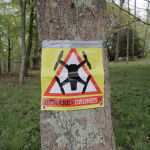
David Stock
Beware of drones—the warning sign which greets visitors to the Cowdray Park Estate, West Sussex, UK forest course. Whilst signs like this are intended to be fun, safety is an important aspect of FPV events as all racers are keen to avoid demonising their sport and protect it from over-regulation.
-
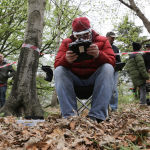
David Stock
Richard Hartley dons his goggles and flies the woodland course at Cowdray Park Estate, West Sussex, UK.
-

David Stock
A drone in flight at Cowdray Park.
-
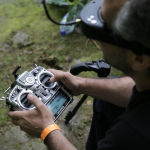
David Stock
A pilot controls his drone around the East Grinstead, UK course. The controllers are quite large but offer numerous settings adjustable during flight.
-
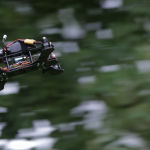
David Stock
A multirotor drone in flight at the “Hidden Valley” course near Brighton, UK.
-
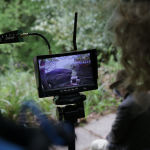
David Stock
Spectators at the East Grinstead course watch as a pilot tries to navigate the difficult rock pass part of the time-trial course.
-
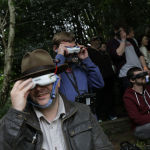
David Stock
Spectators at the East Grinstead course watch a drone in flight.
-
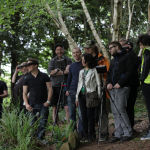
David Stock
Crowd-pleaser: more spectators watch as a drone pilot completes the course.
-
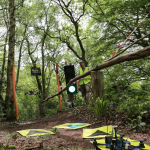
David Stock
Take-off: a drone starts the difficult East Grinstead time-trial course.
-

David Stock
Navigating the rock pass section at the East Grinstead course.
-
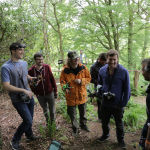
David Stock
Pilots chat in between races at East Grinstead.
-

David Stock
Losing a drone is not uncommon and can lead to hours of searching. In this case, Jonny Banton’s machine was found in a matter of minutes.
-
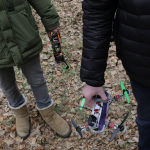
David Stock
Geordie Milne and Gabriel Robson with their quads at Cowdray Park Estate.
-
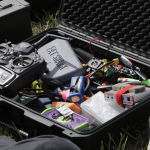
David Stock
A typical box of parts and spares.
-

David Stock
Nick Bailey (left), Chi Lau (centre) and Alex Howell (right) fly around the Urban X section at Hidden Valley.
-
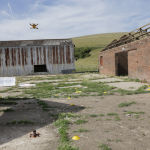
David Stock
Pilots take off at an Urban X heat at the Hidden Valley course.
-

David Stock
Rik Leigh (left) and Alex Howell (right) discuss issues with a quad drone following a crash.
-

David Stock
Alex Howell (far left) Gabriel Robson (centre) and Rik Leigh (right) prepare their racing qudcoptor drones ahead of an Urban X heat at the Hidden Valley course.
-
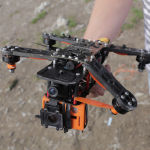
David Stock
Alex Howell’s broken quadcopter.
-
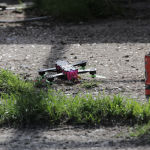
David Stock
A quadcopter crashes out at Hidden Valley.
-
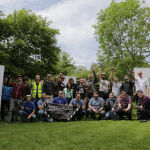
David Stock
A group of drone racers at the East Grinstead FPV league event.
-

David Stock
Dominic Clifton (left) after winning the East Grinstead FPV league event.
“Once you try it you’ll be hooked.”
Racing continues throughout the day and, while competitive, the priority is always to have fun. Pilots encourage each other, offer advice and tips on bettering their flying, and, following a crash, will be the first to lend tools or spare parts to get a pilot back on the track. Once the gentle teasing has subsided, of course.
A few weeks prior, the first US national drone-racing championships concluded at the California State Fair in Sacramento, and so I asked some of the British pilots for their thoughts on the expansion of FPV drone racing. “I can only hope the hobby gets bigger,” said Jack Nash, “so people can get into it, enjoy it, and have dedicated places to race.” Not all are so sure: “Its a double edged sword,” said Matt Denham. “It may become more acceptable but we may also see more stupidity.” He’s referring to the irresponsible pilots giving drones and multirotors a bad name, whether by flying too close to commercial flights or by doing other similarly stupid things.
Every pilot I met struggled with this dichotomy: keep it to themselves and retain the enthusiast community, or shout from the rooftops but lose control. Most find it impossible to not shout about it. “It’s just so much fun,” said Gabriel Robson, who at 16 is one of the youngest flyers on the scene. “Once you try it you’ll be hooked,” another enthused. On one occasion Nash handed me a micro drone: “Borrow it as long as you like— see how you get on with flying.” There is such passion about the sport that potential new pilots are welcomed with open arms. All the racers I met genuinely believed that everyone should be taking part, including me.
FPV events will inevitably get bigger and better, especially if the recent US national event is something to go by. It seems inevitable that TV rights, energy drink sponsors, and huge prize-winning international leagues will surely follow—and in turn, competitiveness will soar, rules and regulations will be formalised, and the use of bleeding-edge technology and engineering will increase.
Despite any of their aforementioned reservations, though, none of the pilots I photographed would get in the way of the progression of their sport—and indeed, given the momentum that FPV drone racing has gathered just in the last 12 months, they probably couldn’t stop the progression anyway. I do wonder if some of the sport’s magic will be lost in that transition.
Until that metamorphosis occurs, though, it felt good to witness the camaraderie, community spirit, and fun of the sport in its early days. As Jack Nash put it: “We’re not hurting anyone, not killing the planet, and we are making a few friends and some good memories along the way.”
David Stock is a photographer based in London.
This post originated on Ars Technica UK

